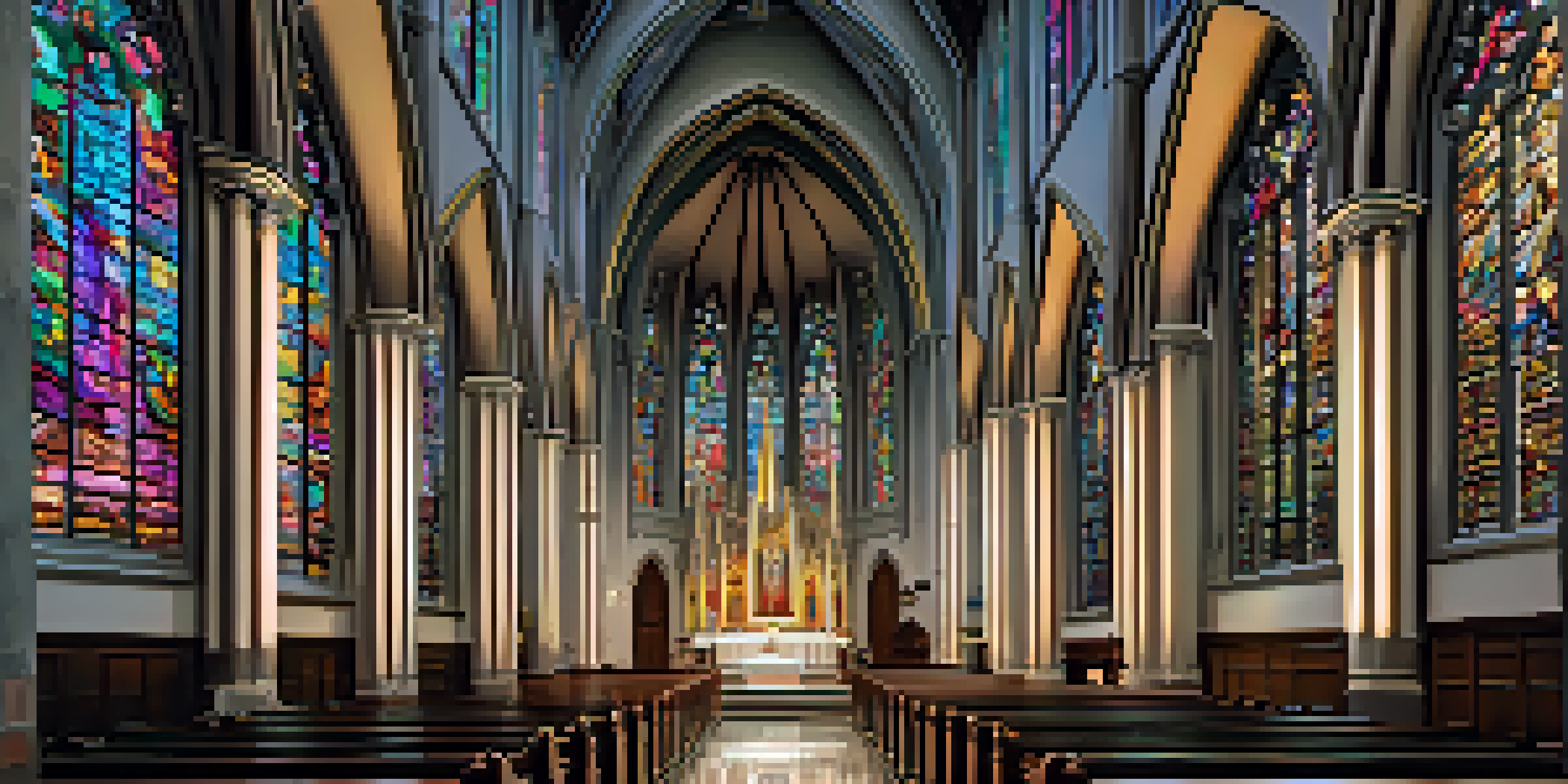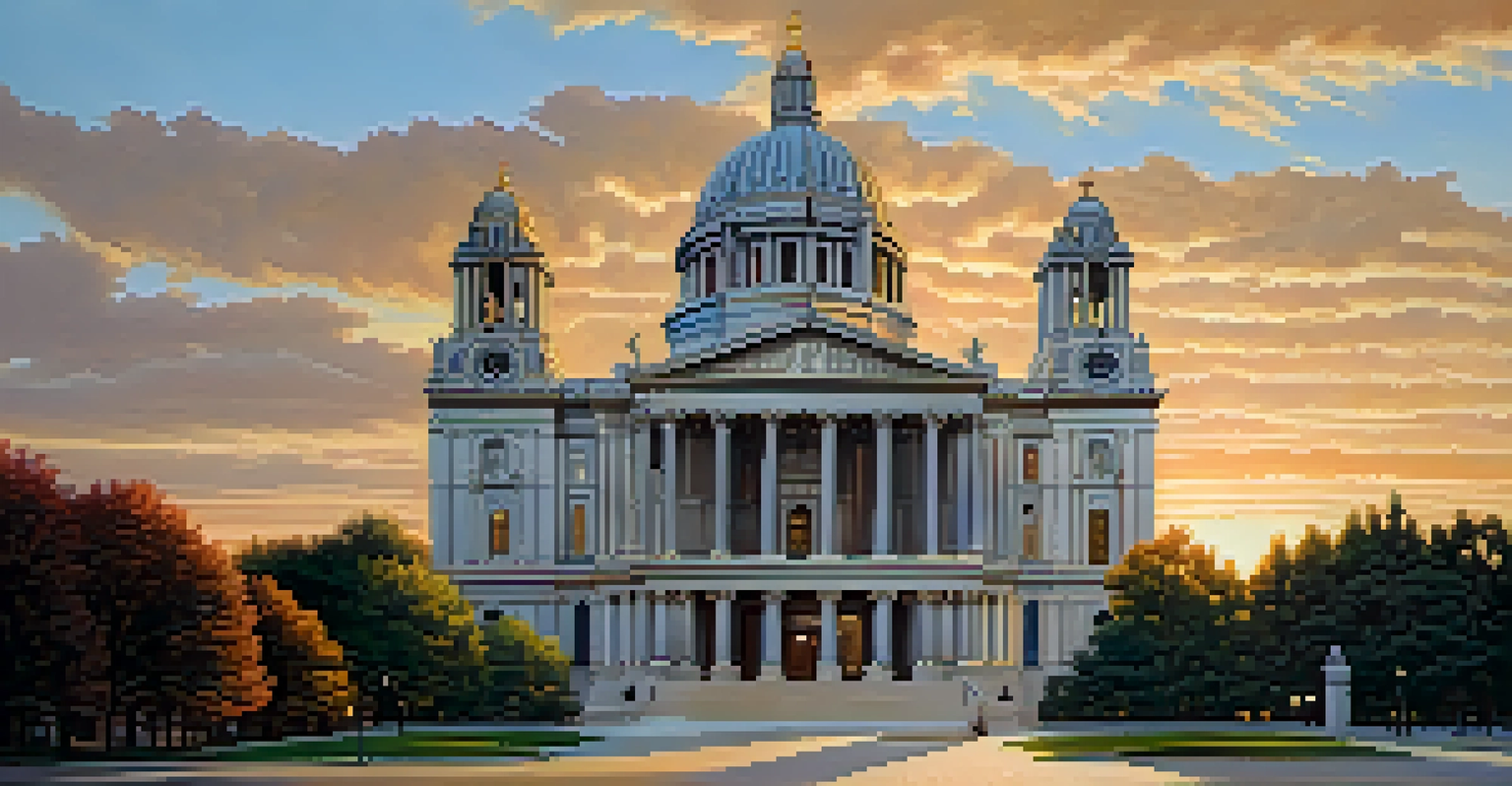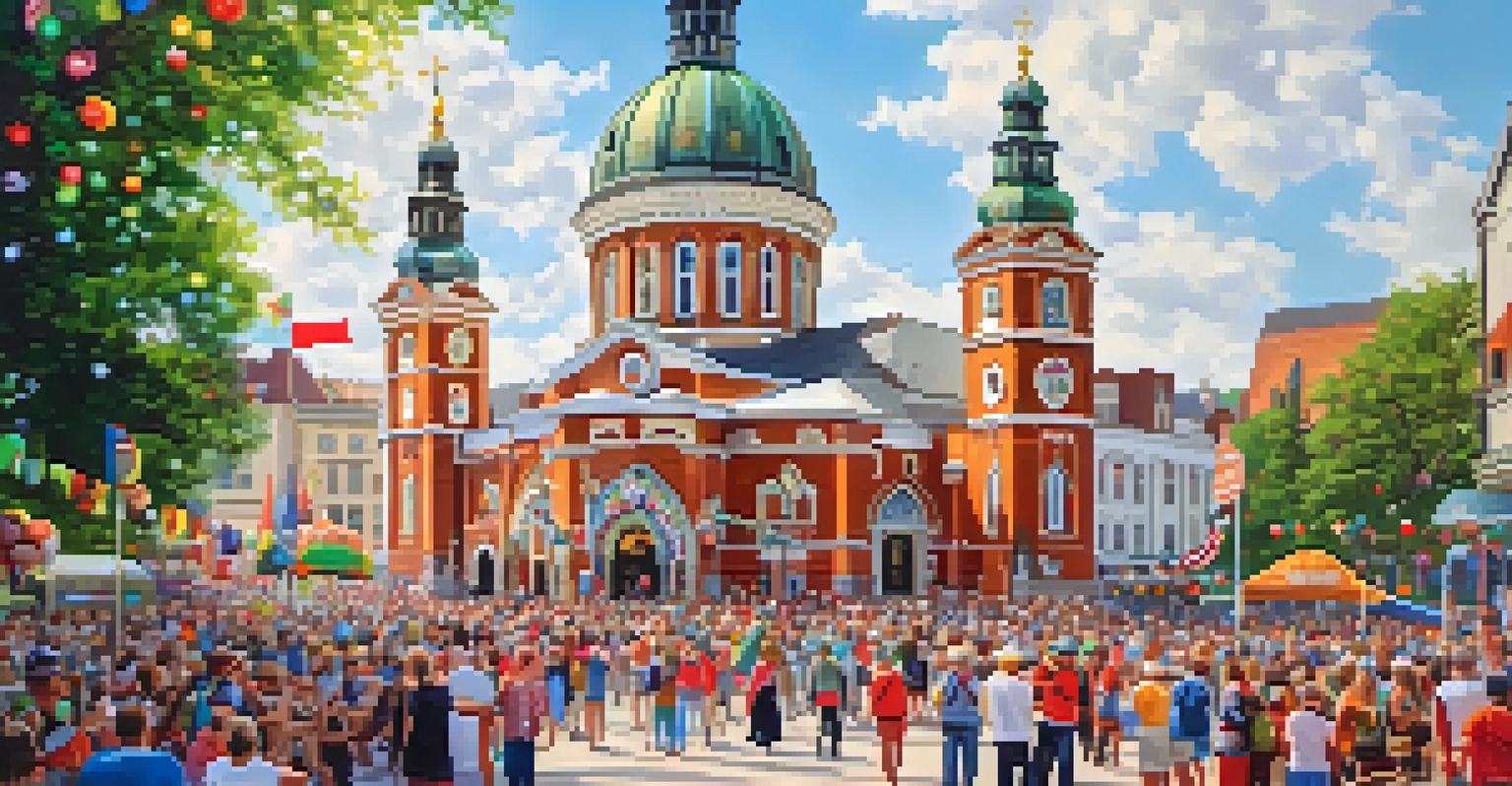Historic Churches of Detroit: Architectural Marvels to Visit

The Rich History of Detroit's Churches
Detroit's churches are more than just places of worship; they are a testament to the city's rich cultural and architectural history. Many of these historic churches have stood the test of time, witnessing the city's evolution from a bustling frontier town to a vibrant metropolis. Each building tells a unique story, reflecting the diverse communities that have thrived in Detroit over the years.
Churches are not made of brick and mortar, but of faith and love.
As you explore these sacred spaces, you'll find that they often served as gathering points for immigrants and locals alike, fostering a sense of community and belonging. From grand cathedrals to quaint chapels, each church embodies the hopes and dreams of its congregation. This historical significance makes them not only places of worship but also important cultural landmarks.
Visiting these churches allows you to step back in time and appreciate the architectural styles that define Detroit's skyline. Their intricate designs and stunning stained glass windows are a feast for the eyes, making them must-see destinations for both locals and tourists.
St. Joseph Church: A Gothic Gem
One of the most stunning examples of Gothic architecture in Detroit is St. Joseph Church, located in the heart of the city. Built in the late 19th century, this church boasts breathtaking spires and intricate stonework that draws visitors from around the world. Its majestic presence serves as a reminder of the craftsmanship that went into its construction.

Inside, the church features beautiful stained glass windows that tell biblical stories, casting colorful light across the pews. The serene atmosphere and rich history make it a perfect place for reflection and prayer. Many couples also choose St. Joseph Church for their weddings, adding to its romantic charm.
Detroit's Churches: Cultural Landmarks
Detroit's historic churches serve as vital cultural landmarks, reflecting the diverse communities and rich heritage of the city.
St. Joseph Church not only serves its congregation but also acts as a cultural hub, hosting concerts and community events. This blending of faith and community spirit makes it a vital part of Detroit's heritage.
The Historic Detroit Cathedral: A True Architectural Marvel
The Detroit Cathedral, formally known as the Cathedral of St. Paul, is another must-visit for architecture enthusiasts. As the seat of the Episcopal Diocese of Michigan, this cathedral showcases stunning neoclassical architecture, complete with grand columns and a beautifully detailed facade. Its impressive structure is a defining feature of the Detroit skyline.
The church is the one institution that exists for those outside it.
Inside, the cathedral boasts a stunning nave adorned with intricate carvings and beautiful murals. Visitors often find themselves in awe of the soaring ceilings and the sense of peace that envelops the space. Regular services and special events held here draw in a diverse crowd, further enriching the community's connection to this historic landmark.
The Cathedral of St. Paul also plays a significant role in the local arts scene, hosting performances and art exhibitions. This integration of faith and culture makes it a vital part of Detroit's identity.
Sweetest Heart of Mary: A Polish Heritage Icon
If you're looking to explore the Polish heritage of Detroit, Sweetest Heart of Mary Church is a must-visit. This stunning church, built in the early 20th century, stands as a symbol of the Polish community's deep-rooted history in the city. Its beautiful architecture features intricate details and a stunning dome that dominates the skyline.
The interior of Sweetest Heart of Mary is equally impressive, with ornate altars and stunning stained glass windows that depict scenes from Polish history and Catholic tradition. The church is not only a place of worship but also a cultural center for the community, hosting events that celebrate Polish heritage.
Architectural Splendor in Worship
These churches showcase stunning architectural styles, from Gothic to Romanesque, making them must-visit destinations for locals and tourists alike.
Visiting during a festival or service provides a glimpse into the vibrant traditions that continue to thrive in Detroit. It's a warm and welcoming place that truly captures the spirit of the city's Polish community.
The Majestic St. Andrews Catholic Church
St. Andrews Catholic Church is a beautiful example of Romanesque architecture in Detroit. Established in the late 19th century, this church features stunning arches and a striking bell tower that can be seen from afar. Its design reflects the deep faith and dedication of the community that built it.
Inside, the church is adorned with exquisite artwork, from its detailed frescoes to the beautifully crafted altar. The atmosphere is inviting, making it a popular place for both worship and community gatherings. Many visitors are captivated by the church's sense of peace and beauty.
St. Andrews also plays an important role in community outreach, providing various services to those in need. This commitment to service enriches the church's legacy and reinforces its importance in the Detroit community.
The Historic Grace Episcopal Church
Grace Episcopal Church is a hidden gem located in Detroit, offering a blend of history and architectural beauty. This church is known for its stunning Gothic Revival style, characterized by its pointed arches and detailed stonework. It has been a cornerstone of the community since the late 19th century, welcoming parishioners from all walks of life.
The interior of Grace Episcopal Church is just as captivating, with a beautiful wood ceiling and intricate stained glass windows that filter light into the space. Many people find solace here, drawn in by the church's serene ambiance and rich history. The church also hosts various cultural events that connect the community, making it a lively hub.
Community and Faith Intertwined
Beyond worship, these churches foster community connections through events and outreach programs, highlighting their importance in Detroit's social fabric.
Visiting Grace Episcopal Church provides an opportunity to appreciate not only its architectural beauty but also its role in fostering community and faith in Detroit.
The Iconic St. Mary’s Church: A Community Cornerstone
St. Mary’s Church stands as a testament to the vibrant Italian-American community in Detroit. This church, with its beautiful Romanesque architecture and welcoming atmosphere, has been a cherished landmark since the early 20th century. Its design features stunning mosaics and a grand entrance that invites visitors to explore its beauty.
Inside, St. Mary’s is adorned with intricate artwork that tells the stories of its congregation. The church is not just a place of worship; it is a gathering place that hosts cultural events, celebrations, and community outreach programs. It serves as a vital link between faith and the local culture, making it a beloved institution.

The vibrant community surrounding St. Mary’s Church adds to its charm, making it a lively and inviting space. Whether attending a service or a festival, visitors will experience the warmth and spirit of the Italian-American heritage.
The Lasting Legacy of Detroit's Historic Churches
The historic churches of Detroit are not just architectural treasures; they also embody the spirit and resilience of the city. Each church tells a story of faith, community, and cultural heritage that has shaped Detroit into the diverse city it is today. As you visit these sites, you’ll gain a deeper understanding of the communities they serve.
Beyond their physical beauty, these churches play an essential role in the lives of many Detroit residents. They offer support, fellowship, and a sense of belonging, making them integral to the city's social fabric. Many churches also engage in charitable work, providing services to those in need and fostering a spirit of generosity.
As Detroit continues to evolve, these historic churches remain a source of inspiration and connection. They remind us of the importance of community, faith, and the shared history that binds us all together.